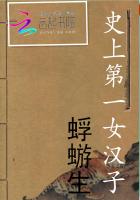The engendering idea of some works is stylistic; a technical preoccupation stands them instead of some robuster principle of life.And with these the execution is but play; for the stylistic problem is resolved beforehand, and all large originality of treatment wilfully foregone.Such are the verses, intricately designed, which we have learnt to admire, with a certain smiling admiration, at the hands of Mr.Lang and Mr.Dobson; such, too, are those canvases where dexterity or even breadth of plastic style takes the place of pictorial nobility of design.So, it may be remarked, it was easier to begin to write ESMOND than VANITY FAIR, since, in the first, the style was dictated by the nature of the plan; and Thackeray, a man probably of some indolence of mind, enjoyed and got good profit of this economy of effort.But the case is exceptional.Usually in all works of art that have been conceived from within outwards, and generously nourished from the author's mind, the moment in which he begins to execute is one of extreme perplexity and strain.Artists of indifferent energy and an imperfect devotion to their own ideal make this ungrateful effort once for all; and, having formed a style, adhere to it through life.But those of a higher order cannot rest content with a process which, as they continue to employ it, must infallibly degenerate towards the academic and the cut-and-dried.Every fresh work in which they embark is the signal for a fresh engagement of the whole forces of their mind; and the changing views which accompany the growth of their experience are marked by still more sweeping alterations in the manner of their art.So that criticism loves to dwell upon and distinguish the varying periods of a Raphael, a Shakespeare, or a Beethoven.
It is, then, first of all, at this initial and decisive moment when execution is begun, and thenceforth only in a less degree, that the ideal and the real do indeed, like good and evil angels, contend for the direction of the work.
Marble, paint, and language, the pen, the needle, and the brush, all have their grossnesses, their ineffable impotences, their hours, if I may so express myself, of insubordination.It is the work and it is a great part of the delight of any artist to contend with these unruly tools, and now by brute energy, now by witty expedient, to drive and coax them to effect his will.Given these means, so laughably inadequate, and given the interest, the intensity, and the multiplicity of the actual sensation whose effect he is to render with their aid, the artist has one main and necessary resource which he must, in every case and upon any theory, employ.He must, that is, suppress much and omit more.He must omit what is tedious or irrelevant, and suppress what is tedious and necessary.But such facts as, in regard to the main design, subserve a variety of purposes, he will perforce and eagerly retain.And it is the mark of the very highest order of creative art to be woven exclusively of such.There, any fact that is registered is contrived a double or a treble debt to pay, and is at once an ornament in its place, and a pillar in the main design.















